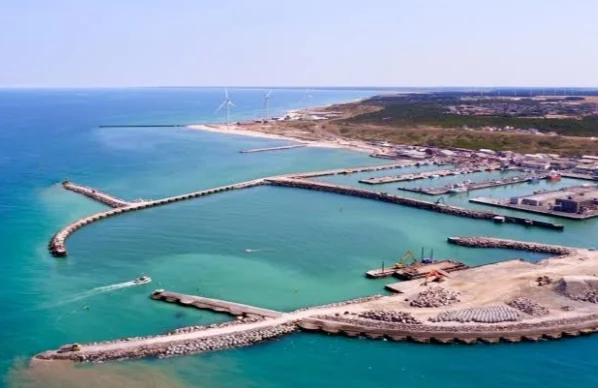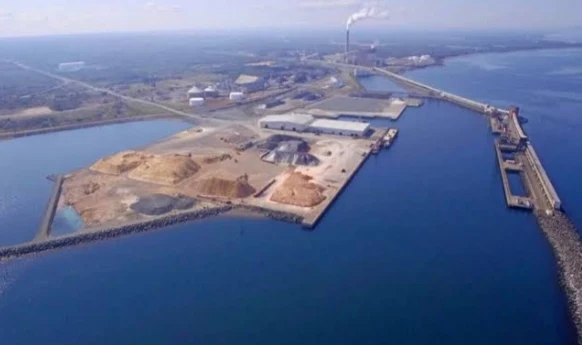Canada Poised to Lead: A Deep Dive into the Green Hydrogen Landscape
Canada, with its vast renewable resources and ambitious climate goals, is emerging as a global frontrunner in the green hydrogen revolution.
Canada's Green Hydrogen Landscape
Canada, with its abundant renewable energy resources, is well-positioned to become a global leader in green hydrogen production. Here's a table summarizing some key aspects of Canada's green hydrogen initiatives:
| Aspect | Description |
|---|---|
| Natural Advantages | Abundant renewable energy resources (solar, wind, hydro), cold climate for efficient electrolysis. |
| Government Support | Federal and provincial government policies and incentives to promote green hydrogen development. |
| Industry Involvement | Major energy companies, technology providers, and research institutions are actively involved. |
| Projects | Several large-scale green hydrogen projects are underway or planned, including in Alberta, British Columbia, and Quebec. |
| Export Potential | Canada has the potential to export green hydrogen to other countries, especially those with limited renewable resources. |
| Challenges and Opportunities | Challenges include infrastructure development, cost reduction, and competition from other regions. Opportunities include job creation, economic growth, and environmental benefits. |
This clean fuel, produced using renewable energy sources like solar and wind, holds immense potential for decarbonizing various sectors, from transportation and industry to buildings and heating. Let's explore the exciting developments and future prospects of green hydrogen in the Canadian landscape.
Fueled by Ambition:
The Canadian government unveiled its Hydrogen Strategy for Canada in 2020, outlining a roadmap to achieve net-zero emissions by 2050 and establish Canada as a global leader in clean hydrogen production and export. This strategy focuses on:
- Stimulating hydrogen production: Through financial support, incentives, and research & development initiatives.
- Building infrastructure: Investing in electrolyzer facilities, pipelines, and storage solutions.
- Developing demand: Encouraging hydrogen adoption in key sectors like transportation, industry, and heating.
Megaprojects on the Horizon:
Recent months have witnessed significant progress, with two major green hydrogen megaprojects announced:
- Hydrogen Quebec: A $1.2 billion project in Bécancour, Quebec, will produce clean hydrogen from hydropower for export and domestic use.
- BC Green Hydrogen Hub: A consortium led by Royal Dutch Shell plans to invest $1.35 billion in a green hydrogen production facility in Delta, British Columbia.
These projects showcase the growing investor confidence and potential for large-scale green hydrogen production in Canada.
Regional Initiatives:
Beyond national efforts, several provinces are taking proactive steps:
- Alberta: Leveraging its natural gas resources to produce blue hydrogen with carbon capture and storage, with plans to transition to green hydrogen over time.
- Ontario: Implementing its own hydrogen strategy focusing on clean transportation and industrial decarbonization.
- British Columbia: Aiming to be a global leader in clean hydrogen production and export, leveraging its abundant hydro and wind resources.
Green Hydrogen Statistics in Canada: A Snapshot
While green hydrogen is still an emerging sector in Canada, it's experiencing rapid growth. Here are some key statistics to paint a picture:
Production:
- Current: As of 2023, green hydrogen production in Canada is minimal, accounting for less than 0.7% of the total hydrogen produced (around 3 million tonnes annually).
- Future Potential: Estimates suggest green hydrogen could contribute up to 30% of Canada's end-use energy by 2050, highlighting its significant potential.
Projects:
- Number: Several green hydrogen projects are in various stages of development, with two major megaprojects recently announced:
- Hydrogen Quebec: $1.2 billion project to produce green hydrogen from hydropower.
- BC Green Hydrogen Hub: $1.35 billion project led by Royal Dutch Shell.
- Distribution: These projects are geographically diverse, showcasing potential across various regions.
Investment:
- Growing: Both public and private investments are increasing significantly, supporting project development and infrastructure creation.
- Example: The Canadian government has committed $1.5 billion to support hydrogen initiatives through its Hydrogen Strategy for Canada.
Technology:
- Focus: Development and deployment of efficient electrolyzer technologies to produce green hydrogen from renewable electricity are crucial.
- Advancements: Ongoing research and innovation aim to reduce costs and improve efficiency of these technologies.
Overall:
- While green hydrogen production in Canada is nascent, the statistics illustrate its rapid growth and immense potential.
- Overcoming challenges related to cost, infrastructure, and regulation will be critical to unlocking its full potential for a sustainable future.
Remember: These are just a few key statistics, and the landscape is constantly evolving. Stay updated on the latest developments and research for a more comprehensive understanding of green hydrogen in Canada.
Green Hydrogen Statistics in Canada: Table
| Category | Statistic | Year (if applicable) | Source |
|---|---|---|---|
| Production | Total Hydrogen Production | 2023 | Natural Resources Canada |
| Green Hydrogen Production | 2023 | Natural Resources Canada | |
| Green Hydrogen as % of Total Production | 2023 | Calculated from above | |
| Green Hydrogen Production Target (by 2050) | 2020 | Hydrogen Strategy for Canada | |
| Projects | Number of Green Hydrogen Projects | 2023 | Various news sources |
| Examples of Major Projects | - | See article for details | |
| Geographical Distribution of Projects | - | See article for details | |
| Investment | Total Government Investment | 2023 | Hydrogen Strategy for Canada |
| Examples of Private Investment | - | See article for details | |
| Technology | Focus Area | - | See article for details |
| Key Challenges | - | See article for details | |
| Challenges | Cost Comparison (Green vs. Traditional Fuels) | 2023 | Various industry reports |
| Infrastructure Needs | - | See article for details | |
| Regulatory Landscape | - | See article for details |
Challenges and Opportunities:
While the future looks promising, challenges remain:
- Cost competitiveness: Green hydrogen is currently more expensive than traditional fossil fuels. Continued technological advancements and policy support are crucial to bridge this gap.
- Infrastructure development: Building a robust hydrogen infrastructure requires significant investment and collaboration across various stakeholders.
- Standardization and regulations: Clear frameworks and standards are needed to ensure the safe and efficient development of the hydrogen industry.
Conclusion:
Canada's green hydrogen landscape is brimming with potential. With clear government strategies, ongoing project development, and regional initiatives, the country is well-positioned to become a global leader in this clean energy revolution. Overcoming the challenges and capitalizing on the opportunities will be key to unlocking the full potential of green hydrogen for a sustainable future in Canada and beyond.





